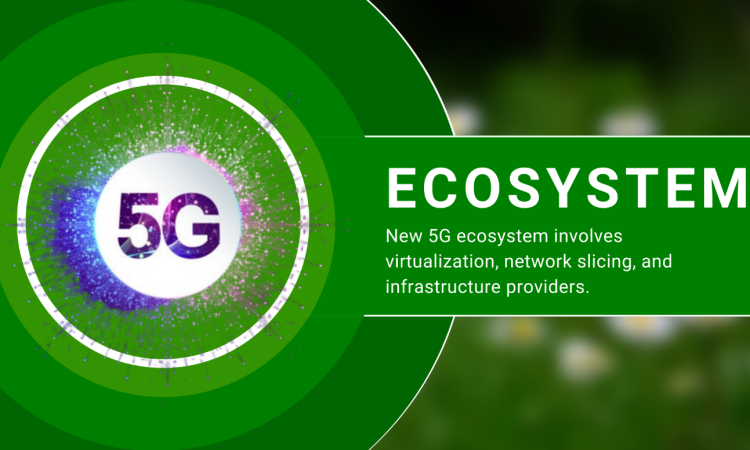
The Success of GSM and 3GPP Technologies
GSM and its successor 3GPP technologies have achieved monumental success thanks to the development of a robust ecosystem. With over 5 billion GSM subscribers globally, this ecosystem has been pivotal for numerous industry players due to standardized processes and interfaces, such as the unique air interface and the separation of Access and Non-Access Stratum. Parallel ecosystems, like the IETF for IP and IEEE for Ethernet and WLAN, also play significant roles, sometimes overlapping and influencing one another. Organizations like GSMA, NGMN, and 3GPP standardization groups continue to be critical to the mobile network operator (MNO) business. However, cooperation among MNOs and a shared commitment are essential to compete effectively with over-the-top (OTT) service providers and hyperscalers. So, now let us see If a New 5G Ecosystem Emerging along with Smart LTE RF drive test tools in telecom & Cellular RF drive test equipment and Smart Mobile Network Monitoring Tools, Mobile Network Drive Test Tools, Mobile Network Testing Tools in detail.
Functions, Nodes, and Network Integration
The 3GPP architecture (stage 2) outlines the relevant network functions, although there’s not always a direct one-to-one relationship between functions and nodes. Operators have to decide which interfaces to use for network integration, recognizing that not every interface defined by 3GPP is necessary. Standardized network functions can be subdivided and distributed across multiple systems if it improves performance.
Operators must choose the right level of integration when building networks, balancing complexity and efficiency. This involves using a few pre-integrated systems from suppliers while retaining the flexibility to construct better networks through higher system modularity. To manage network integration complexity, the number of entities must align with the number of people who understand these systems and their interdependencies. Overly modular architectures, such as those proposed by microservices, may contradict this principle.
The Unchanging Nature of Mobile Networks
The fundamental nature of mobile networks has remained consistent over the past 30 years, despite frequent renaming of nodes. The architecture essentially carries data from one endpoint to another, across an air interface and intermediary nodes, providing various channels for different traffic types. These channels have unique characteristics, such as for NB-IoT, and their control mechanisms involve mobility, quality, and point-to-point vs. multipoint communication. Historically, the network handled some end-user services, but this function is better suited to an OTT approach today. Researchers are exploring more fundamental changes to networks, such as information-centric networking.
The Dominance of Radio Access Networks (RAN)
More than 80% of current network investments are related to RAN, with the core network following. Consequently, cost reduction efforts focus primarily on RAN. Significant progress has been made with Single-RAN technology, integrating GSM/UMTS/LTE into a single base station radio unit. Despite discussions on open Abis and Iub interfaces since the early GSM days, initial attempts to achieve greater network flexibility through different RAN suppliers failed. Today, the interface between distributed radio units and centralized RAN processing (CPRI) is still not an open standard. System suppliers have a vested interest in protecting their core business and income, which has hindered operators’ efforts to open up the relatively closed radio network architecture. The Open-RAN project is the latest initiative, but its success remains uncertain.
IMS and Third-Party Enablement
The original vision for IMS was to create a common enabling platform for multimedia services, but this never materialized. Similar to earlier enabling platforms like intelligent networks, IMS became overly complicated, maintaining legacy paradigms and supplementary services. Despite being based on a simple SIP protocol inherited from IETF, 3GPP’s implementation was an attempt to retain operator control over emerging IP traffic and services. IMS has primarily been implemented as a replacement for outdated voice systems, competing with OTT services like Skype and Facetime. Its remaining advantage is global reachability and interoperability, though at the cost of extreme complexity.
The Impact of Virtualization and Network Slicing
Virtualization is transforming how networks are built, but not how they function. This change, although not reflected in 3GPP specifications, promotes the “softwarization” of networks, allowing functions to be deployed as software rather than physical nodes. This leads to the parallel deployment of many network functions and the creation of virtual networks, known as “network slicing.” Different network slices make sense only if they vary in characteristics like KPIs, granted resources, functional diversity, operation and management methods, and ownership. However, the differentiation among IoT, MBB, and URLLC slices remains abstract, and some functions, like URLLC, require local deployment to maintain low latency.
The Role of the Network-IAAS Provider
From a socio-economic perspective, networks should split into two parts: a Network-IaaS-Provider and a set of Software-MNOs acting as tenants. The Network-IaaS-Provider argument is compelling because the densification of networks requires a vast number of sites, which a single MNO cannot finance. Network infrastructure could be treated as a public asset, like energy, water, or roads. Jointly addressing coverage obligations and legal requirements, such as lawful intercepts, becomes easier when handled by a single provider for all tenants. Pooled and shared spectrum leads to higher peak user data rates, minimal EMVU radiation, and more secure integration of infrastructure clouds.
Network Slicing and the Network-IAAS Provider
Network slicing technology enables multiple Software-MNOs to operate on a common Network-IaaS basis. Driven by political and economic factors, the Network-IaaS-Provider provides and operates a common infrastructure layer, allowing the creation of many competing networks. This infrastructure consists of passive equipment like sites and fibers and active, programmable equipment. Public resources, including spectrum, are pooled and shared, dynamically allocated to different networks. The Network-IaaS-Provider meets regulatory demands like coverage obligations and lawful intercepts, making it a critical infrastructure that needs protection and high resilience.
About RantCell:
RantCell delivers efficient and practical mobile network testing and monitoring solutions, offering in-depth insights into network performance and quality. With intuitive tools and comprehensive analytics, RantCell helps operators optimize their networks and improve user experiences. Also read similar articles from here.




